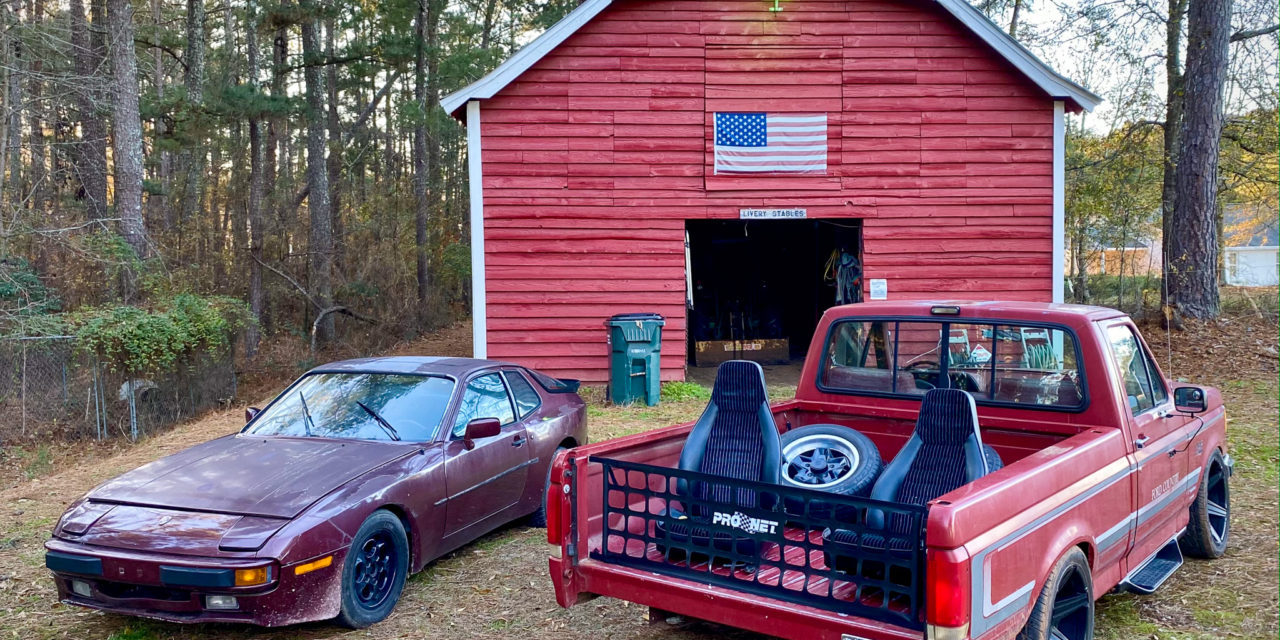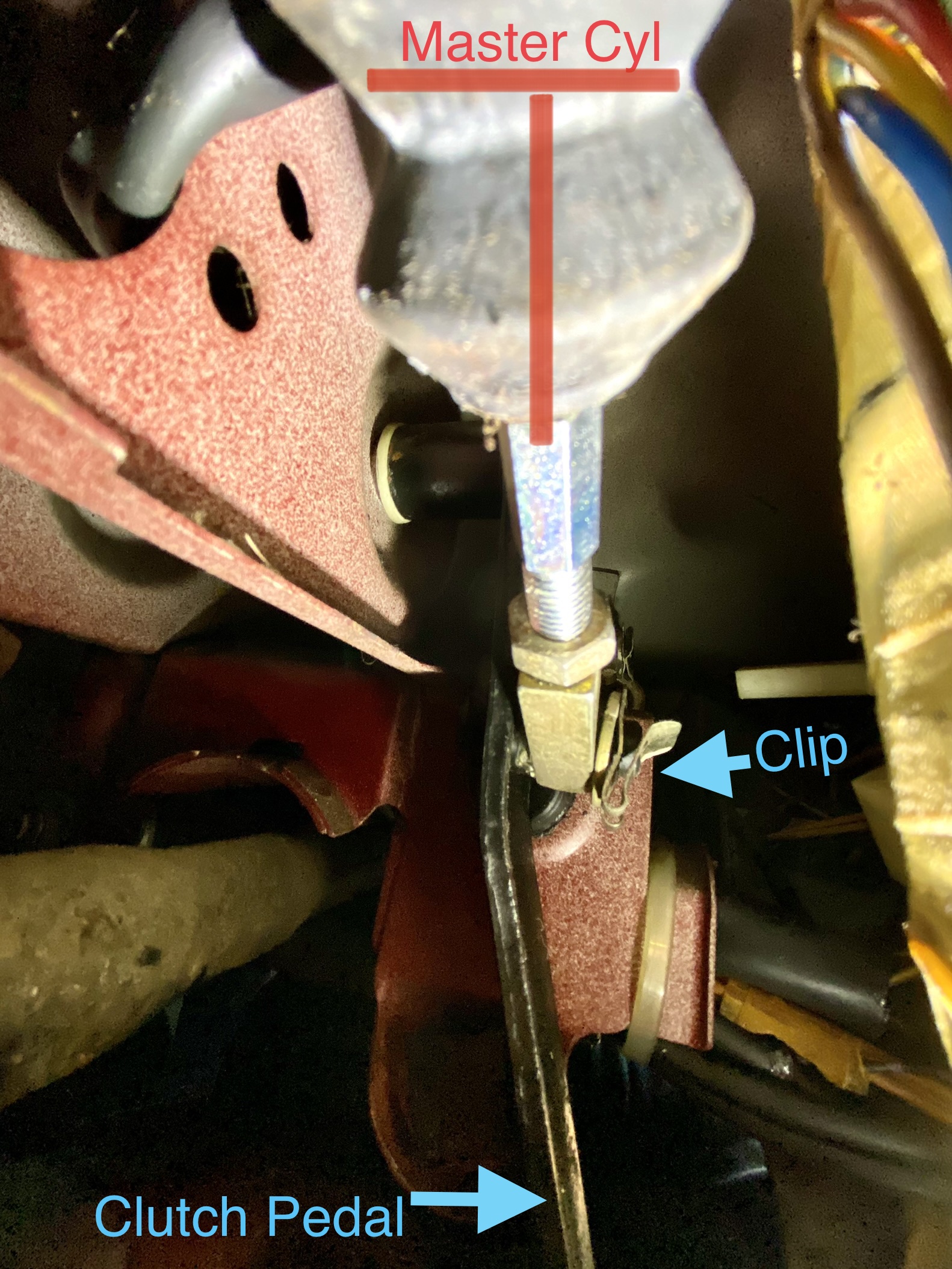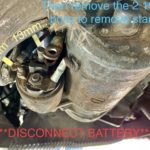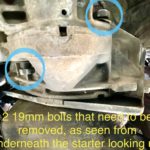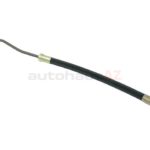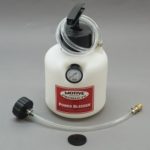We got the 944 running!
And as spiritually uplifting as that feels lol, it just means that we now have to address every… other… problem… with this car. Starting with the Porsche 944 clutch pedal. We don’t seem to have a clutch pedal. It just flops to the floor.
So once again, Elliot Grafton from ‘944 Barn’ shared some wisdom…
“The clutch pedal drops because the hydraulic components are shot. Super common. And almost every 944 needs these parts replaced at this point in their lives.
- Clutch master cylinder
- Clutch slave cylinder
- The clutch hose that runs between those two parts.
Replacing all 3 parts at once is highly recommended. Then bleeding the clutch is a bit tricky, because the air is trying to flow up. I use a Motive Power Bleeder and it just takes a minute… no old school pumping & holding needed.” –Elliott Grafton, 944 Barn
Replacing the 944 clutch master Cylinder (in the interior)
Flip over & crawl on your head/back into the driver’s side floorboard, looking up. There is a clip that attaches the clutch master cylinder to the Porsche 944 clutch pedal itself. Remove that clip (and washer) & slide the rod of the master cylinder over to release it from the pedal.
Replacing the 944 clutch master cylinder (in the engine bay)
Now go to the engine bay, just to the right of the brake booster. That’s where the clutch master cylinder is located. Unplug all the rat’s nest of vacuum stuff to get access to the master. You can just cut the hose that runs from the clutch master to the reservoir if it looks old (it’s got an annoying 1-time use clamp on it anyway). Then grab a piece of that hose for sample, and go to a GOOD parts store (this is where NAPA shines) to get a foot of new hose that’s designed to support brake fluid… and a couple small clamps. If you don’t already have one, you’ll need an 12mm line wrench to loosen the line from the master. Then just remove the two 13mm nuts that hold the clutch master cylinder to the firewall, and pull that thing out!
 You have to remove the starter to get to the clutch slave cylinder…
You have to remove the starter to get to the clutch slave cylinder…
Don’t let that deter you; it’s not a headache. Jack up the car & get it secure on jack stands, then crawl under it. The starter will be obvious. See photos below for removal.
With the 944’s starter removed, you’ll be able to access the clutch slave cylinder easily…
Crack the line/hose running into the salve cylinder loose with that 12mm line wrench. Then remove the two 13mm bolts that secure the clutch slave cylinder. That’ll free it to come out.
Removing the clutch hose…
With the slave cylinder & master cylinder out, the clutch hose is already loose/free at both ends. The hose attaches/braces to the trans area at 1 more point… about 8 inches up from the slave cylinder. It’s one 13mm bolt to get that off, and then you can pull the clutch hose out from the car. There are actually 2 parts to this hose/line that bolt together in the middle: the ‘rubber part’ which you are replacing, and the ‘hard line’ which you reuse. Just separate them & attach the new hose to the hard-line on a bench or the floor. Make sure they line up in approximately the same way they came off. Snake it back through the car, attach your lines, make sure everything is secure. DO NOT reinstall the starter yet. The bleeder for the clutch system is located on the slave cylinder, so wait until after you bleed the system to reinstall the starter. Also, make sure you crawl back on your head and reattach the master cylinder at the clutch pedal with that clip. You’re ready to bleed.
Bleeding the system…
Fill up the brake fluid reservoir to capacity with brake fluid. Attach the Motive Power Bleeder cap, and pump up the Motive Bleeder to about 15psi. Make sure the Motive Bleeder is holding pressure. If it’s losing pressure, chances are you have a leak somewhere, so recheck your hose fittings, and recheck the Motive Bleeder itself to make sure the cap is sealing to the reservoir, etc. Then crawl under the car to the slave cylinder, and crack open that bleeder valve (I believe its a 7mm). Fluid should flow. Let it flow until there are no more bubbles. Having two people helps, with someone at the pump to make sure the pressure stays up around 15psi… AND to pump/test the clutch pedal… AND to make sure the brake fluid level in the reservoir does NOT fall below the clutch feed line (as it will pump air back into the system).

